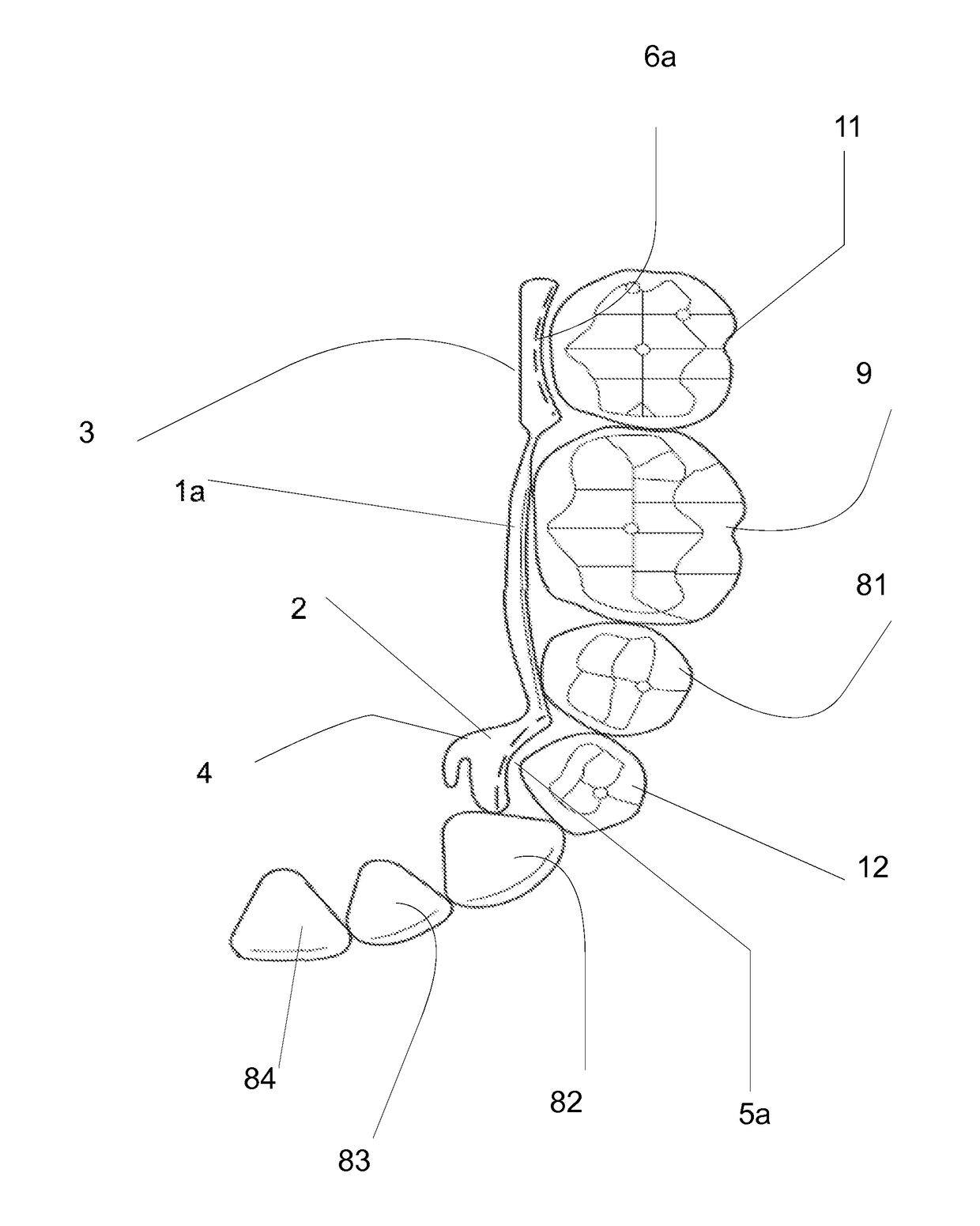Orthodontic lingual device
a lingual device and orthodontic technology, applied in the field of orthodontic lingual devices, can solve the problems of continuous poking of lips and/or cheeks, unsatisfactory feeling, and affecting the speech quality, so as to improve the efficiency, shorten the straightness, and improve the efficiency of the device
- Summary
- Abstract
- Description
- Claims
- Application Information
AI Technical Summary
Benefits of technology
Problems solved by technology
Method used
Image
Examples
Embodiment Construction
[0031]FIG. 1 illustrates the configuration of the teeth in the mandible (lower jaw bone). A rear part of the mouth 120 may be referred to as a distal part of the mouth. A front part of the mouth 110 may be referred to as a mesial part of the mouth. An inner portion of the mouth behind the teeth 130 may be referred to as a lingual region. An outer portion of the mouth 140 may be referred to as a labial region. A mesial-distal direction 115 with respect to a specific tooth has been schematically indicated in FIG. 1. In addition, the lingual-labial direction 135 may be indicated with respect to the same tooth. In this figure, the third molars (wisdom molars) have been included.
[0032]FIGS. 2a and 2b illustrate an orthodontic device that may be adapted for the segmental distalization of a premolar and a molar.
[0033]An elongated central bar (or “arm”) 1 may be integrally formed with a distal part 3 that may include a distal base surface 6 adapted to be attached to a lingual surface of a m...
PUM
 Login to View More
Login to View More Abstract
Description
Claims
Application Information
 Login to View More
Login to View More - Generate Ideas
- Intellectual Property
- Life Sciences
- Materials
- Tech Scout
- Unparalleled Data Quality
- Higher Quality Content
- 60% Fewer Hallucinations
Browse by: Latest US Patents, China's latest patents, Technical Efficacy Thesaurus, Application Domain, Technology Topic, Popular Technical Reports.
© 2025 PatSnap. All rights reserved.Legal|Privacy policy|Modern Slavery Act Transparency Statement|Sitemap|About US| Contact US: help@patsnap.com



